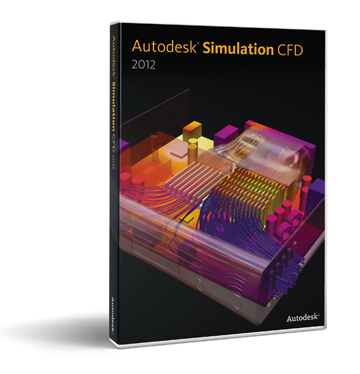August 2, 2011
 It must have been Autodesk‘s plan all along to offer its own CFD (computational fluid dynamics) product. But before it could offer something under its own name, it had to go out and find one worthy of the purpose. In the acquisition of Blue Ridge Numerics in March, maker of CFdesign, Autodesk felt it had found the right technology. So, three months later, Autodesk launches its own product: Autodesk Simulation CFD.
It must have been Autodesk‘s plan all along to offer its own CFD (computational fluid dynamics) product. But before it could offer something under its own name, it had to go out and find one worthy of the purpose. In the acquisition of Blue Ridge Numerics in March, maker of CFdesign, Autodesk felt it had found the right technology. So, three months later, Autodesk launches its own product: Autodesk Simulation CFD.
The new offering “builds on computational fluid dynamics capabilities that Autodesk gained in the Blue Ridge Numerics acquisition in March 2011,” according to the announcement.
“Making informed, up-front decisions about air flow, fluid flow, or electronics cooling is critical to help design and manufacture safer, quality products or construct more energy efficient buildings,” said Buzz Kross, Autodesk’s senior VP of manufacturing.
So what did Autodesk bring to the table, beside rebranding Blue Ridge Numerics’ established product? The short answer is, Autodesk Inventor Fusion. The standalone direct-editing package, Autodesk points out, will let engineers “modify or simplify geometry quickly and easily from virtually any CAD system when running simulations.”
Unlike Autodesk’s flagship parametric modeler Autodesk Inventor, Inventor Fusion offers a lower learning curve and easier ways to create and edit 3D design via direct editing (by pushing, pulling, and rotating faces and features).
Luke Mehelcic, Autodesk’s CFD product manager, clarified, “Inventor Fusion is included in the box with Autodesk Simulation CFD. When you install, you will have access to both. This includes a connection tool that takes your Fusion models directly into Autodesk Simulation CFD to create design studies.”
The announcement emphasizes, among other things, what Autodesk describes as One-Click Simulation. Under this method, users may rely on the software to scan the CAD geometry and automatically identify and load certain input values they would otherwise be forced to specify on their own (for example, flow inlets and outlets). They may also rely on the software to identify and suppress nonessential features to speed up CFD solving.
Another feature, dubbed Design Study Automation, will let you set up multiple design scenarios and solve them simultaneously. The function will let you simulate fluid flows in your design under various thermal values, materials, and boundary conditions before leaving CAD.
Another feature, called Remote Solving will “[make] it easy to harness all available computational power on any user’s network,” the announcement states. The feature comes at no additional cost to users. However, because solver and interface are licensed separately, you may need to purchase additional licenses if you wish to run multiple solvers.
Mehelcic explained by depicting two different remote-solving usages: “For example, if I have a laptop that is not powerful enough or needs to be running other application, I can setup the simulation on my laptop and choose to run it on an open engineering computer while I accomplish other things. This would not have a cost associated with it.”
On the other hand, “[If] I have an engineering desktop computer that I want to run a simulation on and I have another simulation that I want to run simultaneously on another system, this would require two solver licenses,” which requires additional cost.
For sharing CFD results with those who may not have a compatible software program to view analysis outcome, Autodesk offers a free application, calledAutodesk Simulation CFD Viewer. The downloadable viewer can be used as a standalone program or a plug-in to Microsoft PowerPoint, Microsoft Word, or a web browser.
Because many CAD packages, including Autodesk Inventor, now offers integrated stress analysis, many engineers have become proficient in such basic analysis tasks. However, CFD remains a higher-level analysis, often requiring expert intervention or supervision. Autodesk’s one-click simulation, free CFD result viewer, and other measures are calculated to make CFD more accessible to a broader audience.
Subscribe to our FREE magazine, FREE email newsletters or both!
About the Author
Kenneth Wong is Digital Engineering’s resident blogger and senior editor. Email him at [email protected] or share your thoughts on this article at digitaleng.news/facebook.
Follow DE





